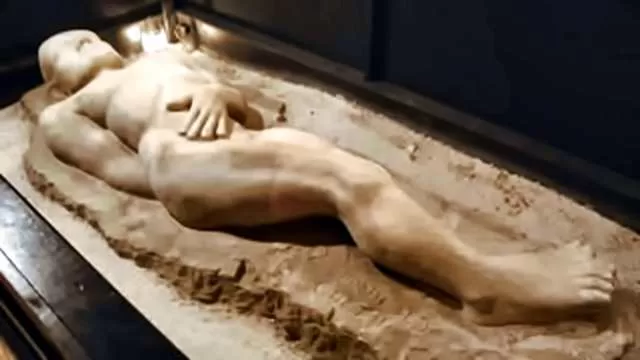The Cardiff Giant, a monumental hoax that captivated America in the late 19th century, serves as a fascinating chapter in the annals of American history. Unlike the Piltdown Man, which took decades to debunk, the Cardiff Giant crumbled under scrutiny in mere weeks. This tale intertwines themes of national pride, biblical lore, and the human penchant for deception.
In the 18th century, the discovery of large bones in places like Big Bone Lick, Kentucky, sparked imaginations and fueled theories about the existence of giants. Cotton Mather, a prominent Puritan minister, suggested that these bones were remnants of giants drowned in Noah’s flood, echoing biblical references such as Job 26:5. This fascination with giants persisted into the 19th century, as evidenced by Joseph Priest’s writings, which described the excavation of Indian graves revealing bones of “gigantic stature.”
The Birth of a Hoax
The story of the Cardiff Giant begins in 1866 when George Hull, an atheist and cigar manufacturer, found himself embroiled in a heated debate with a Methodist revivalist, Rev. Mr. Turk. The topic? The literal truth of biblical giants. Hull, skeptical of the claims, concocted a plan to create his own giant. He envisioned a “petrified man” and sourced a large block of gypsum from Fort Dodge, Iowa, under the pretense of crafting a statue of Abraham Lincoln.

Hull enlisted the help of German sculptor Edward Burghardt to carve the giant. To give it an aged appearance, Hull applied a mixture of stains and sulfuric acid, while using darning needles to create the illusion of pores on the stone’s surface. By November 1868, the finished product, measuring over ten feet long and weighing more than 3,000 pounds, was transported to Binghamton, New York, and subsequently buried on a cousin’s farm in Cardiff.
The Unveiling and Public Frenzy
On October 16, 1869, the Cardiff Giant was “discovered” during a well-digging operation. The excitement was palpable as workers unearthed the stone figure, leading to the proclamation that an ancient Indian had been found. Hull and his accomplice, William C. “Stub” Newell, quickly capitalized on the discovery, charging 25 cents for admission to view the “petrified man.” As word spread, the price doubled, and throngs of curious visitors flocked to see the marvel.

Despite Hull’s attempts to keep the hoax under wraps, news of the deception began to leak. Fearing exposure, Hull sold his share to a group of local businessmen for $23,000. On November 5, 1869, the Cardiff Giant was shipped to Syracuse, where it garnered mixed reactions. While some church leaders hailed it as a fossilized human being, Yale paleontologist Othniel C. Marsh dismissed it as a “most decided humbug.”
Barnum’s Involvement and the Aftermath
The Cardiff Giant caught the attention of showman Phineas T. Barnum, who offered to buy it for $50,000. When the syndicate declined, Barnum commissioned a wax model of the giant and created a plaster replica for his museum in New York. This led to the famous quote attributed to Barnum: “There’s a sucker born every minute,” reflecting the public’s gullibility.
The syndicate sought legal action against Barnum, but the judge’s ruling was clear: if the Cardiff Giant could swear to its own authenticity, they would have grounds for an injunction. On December 10, 1869, Hull confessed to the hoax, and by February 2, 1870, both giants were declared fakes in court.

The Cardiff Giant eventually found a new home with a publisher from Des Moines, and in 1947, it was sold to the Farmer’s Museum in Cooperstown, New York. Today, it is displayed in a replica of the original tent that once housed the giant, serving as a reminder of one of America’s most notorious hoaxes.
In conclusion, the Cardiff Giant not only highlights the lengths to which individuals will go for fame and fortune but also reflects the era’s fascination with the extraordinary. This tale of deception continues to resonate, reminding us of the fine line between belief and skepticism in the pursuit of truth.

